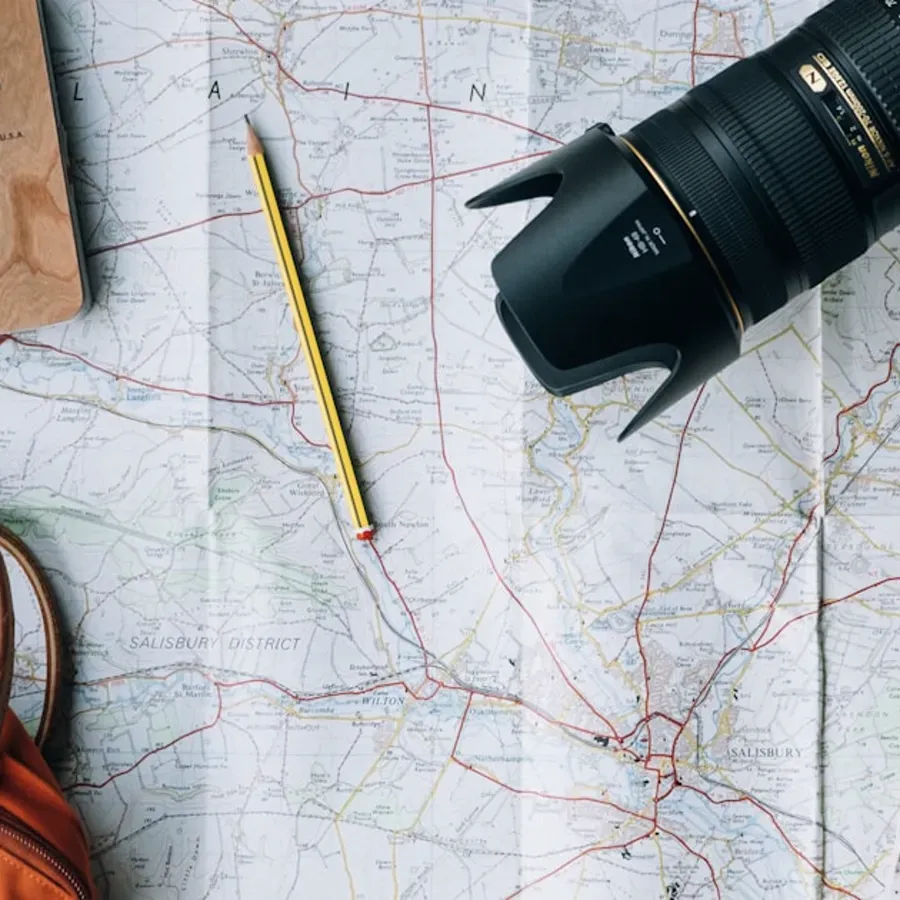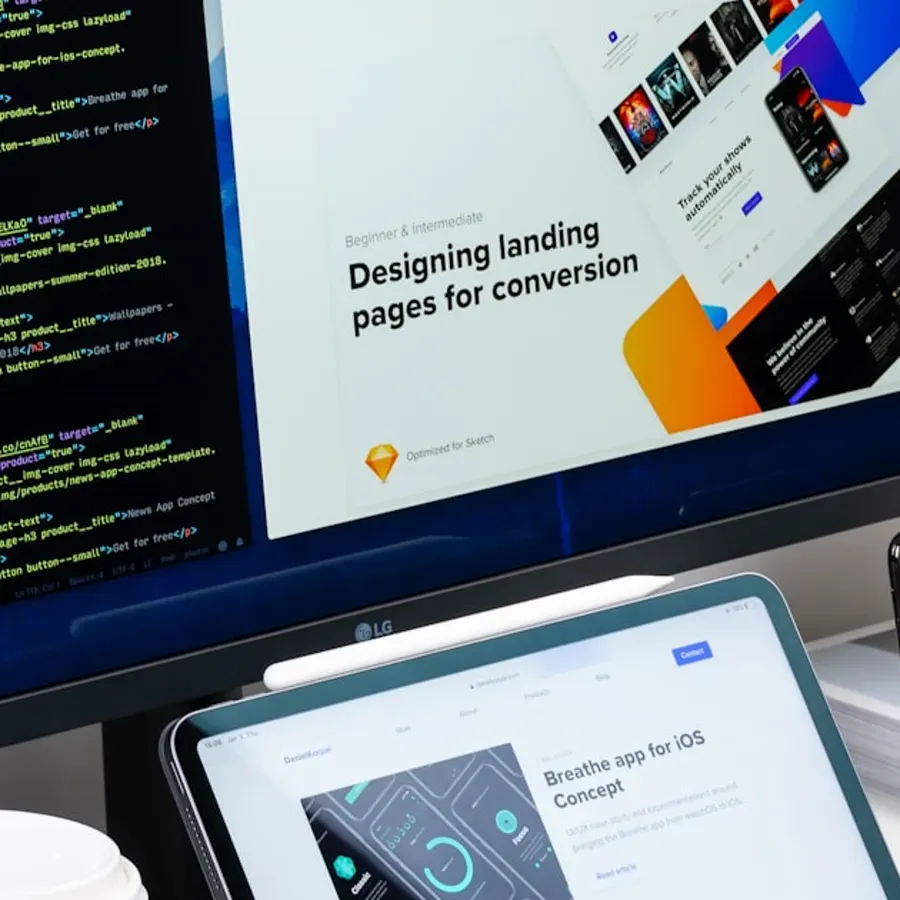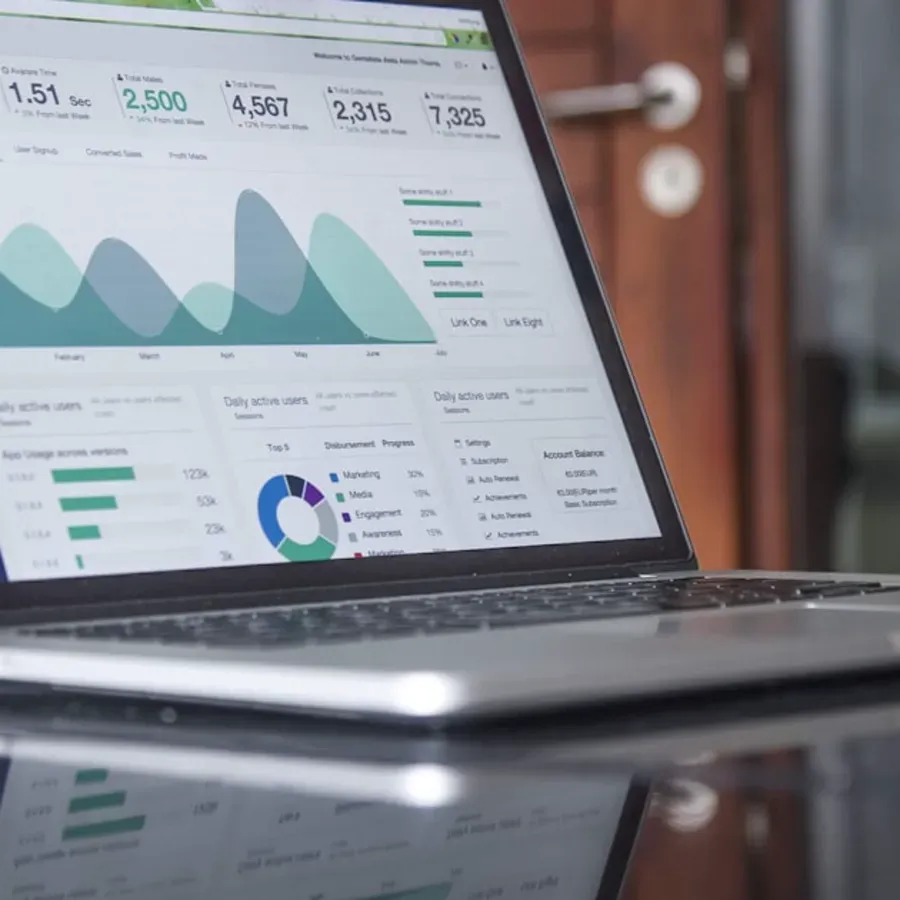
Why Travel Businesses Need Exceptional Websites
In today's digital landscape, your website is often the first touchpoint between your travel business and potential customers. Research shows that 81% of travelers research their trips online before making a booking decision, and 95% of travelers read online reviews before choosing a destination or service. A well-designed travel website design doesn't just showcase destinations—it creates an emotional connection that transforms browsers into bookers.
For tour operators, travel agencies, and hospitality businesses, your website serves multiple critical functions: it's your 24/7 sales team, your brand ambassador, and your primary conversion tool. Unlike generic business websites, travel website design must evoke emotion, build trust, and streamline complex booking processes—all while loading quickly and performing flawlessly across devices. The tourism industry faces unique challenges: highly visual content requirements, integration with multiple booking systems, managing seasonal demand, and competing in an oversaturated market. Your website needs to stand out immediately.
The stakes are high. Industry data reveals that 57% of users won't recommend a business with a poorly designed mobile site, and 88% of online consumers are less likely to return to a site after a bad experience. In the travel sector, where margins can be tight and competition fierce, every lost visitor represents not just a missed booking, but potentially a lifetime customer value of thousands of dollars. Professional tourism website design is no longer optional—it's essential for survival and growth.
Visual Storytelling Through Stunning Imagery
Travel is fundamentally an emotional purchase. People don't book trips based on logic alone—they book based on how a destination makes them feel. This is where exceptional travel website design separates the winners from the also-rans. Your hero section should immediately transport visitors to their dream destination through immersive, high-resolution imagery or video backgrounds that showcase the experience you're selling.
Consider implementing full-width hero videos showing the turquoise waters of Phu Quoc's beaches, the ancient lantern-lit streets of Hoi An at dusk, or the misty mountains of Sapa at sunrise. These visual elements should load quickly despite their size—achieved through lazy loading, modern image formats like WebP, and CDN delivery. Every image should tell a story and evoke the wanderlust that drives booking decisions.
Destination galleries need to go beyond simple photo collections. Implement grid layouts with hover effects that reveal destination names and key highlights. Use parallax scrolling effects to create depth and engagement as users explore your offerings. High-quality photography is non-negotiable—grainy smartphone photos will undermine your credibility instantly. Partner with professional travel photographers or utilize premium stock libraries like Unsplash or Getty Images to ensure every visual element reinforces your brand's quality promise.
Remember that visual storytelling extends to every page. Tour package pages should feature comprehensive photo galleries, destination pages need atmospheric imagery that captures the essence of each location, and even your 'About Us' page should include authentic photos of your team and operations to build trust. In tourism website design, every pixel is an opportunity to inspire action.
Destination Pages That Inspire Action
Your destination pages are where inspiration converts to intention. Each location you serve—whether it's Ha Long Bay's limestone karsts, Da Nang's coastal beauty, or international destinations—deserves a dedicated landing page optimized for both user experience and search engine visibility. These pages should balance aspirational content with practical information.
Structure destination pages with clear sections: an engaging introduction that captures the location's unique appeal, a curated selection of available tours or packages, practical travel information (best time to visit, visa requirements, local customs), compelling customer testimonials specific to that destination, and a prominent booking call-to-action. Include rich media: photo galleries, embedded video tours, and even 360-degree virtual experiences where possible.
Each destination page should incorporate interactive elements that encourage exploration. Implement filterable tour listings where visitors can refine options by duration, price range, activity type, or difficulty level. Include comparison features allowing users to evaluate multiple packages side-by-side. Showcase user-generated content with Instagram feeds or customer photo galleries tagged by location—this social proof is incredibly powerful for conversion.
From an SEO perspective, destination pages are goldmines for organic traffic. Optimize each page with location-specific keywords, comprehensive content that answers traveler questions, and schema markup that helps search engines understand your offerings. A well-executed travel website design strategy treats each destination page as a standalone landing page capable of attracting and converting traffic independently.
Seamless Booking Experience
The booking process is where many travel websites fail. After successfully inspiring visitors with stunning visuals and compelling content, they lose customers during a clunky, confusing, or overly complex booking flow. Your booking engine must be intuitive, transparent, and confidence-inspiring—reducing friction at every step.
Implement a progressive disclosure approach with multi-step forms that break the booking process into digestible phases: destination/date selection, tour or package selection, traveler information, payment, and confirmation. Display a progress indicator so users always know where they are in the process. Show pricing clearly and early—unexpected costs are a primary cause of cart abandonment. Include real-time availability calendars that prevent customers from selecting unavailable dates.
Your booking system should integrate seamlessly with your inventory management, automatically updating availability across all channels. For travel agencies working with multiple suppliers, API integrations with platforms like Booking.com, Agoda, Expedia, or regional systems ensure real-time pricing and availability synchronization. Implement instant booking confirmation with automated email receipts, itinerary PDFs, and pre-trip information.
Payment integration is critical. Support multiple payment methods including international credit cards via Stripe or PayPal, and for the Vietnamese market, local payment options like MoMo, ZaloPay, and bank transfer. Display security badges and SSL certificates prominently—trust signals that reassure customers their financial information is protected. Consider offering flexible payment options like deposits with balance due later, which can significantly increase conversion rates for high-value bookings.
User-Generated Content and Social Proof
Modern travelers trust other travelers more than they trust marketing copy. Incorporating user-generated content (UGC) and social proof throughout your travel website design is essential for building credibility and driving conversions. Studies show that 79% of consumers trust online reviews as much as personal recommendations, and travel websites with reviews see conversion rates up to 270% higher than those without.
Create dedicated testimonial sections on your homepage and throughout tour pages featuring authentic customer reviews with photos, names, and locations. Video testimonials are particularly powerful—seeing real customers enthusiastically describing their experiences creates emotional connection and trust. Implement a review collection system that automatically requests feedback post-trip via email, making it easy for satisfied customers to share their experiences.
Integrate your Instagram feed directly into your website, showcasing real customer photos from their trips. Create a branded hashtag and encourage travelers to tag their photos—then feature the best user-generated content prominently. This serves dual purposes: providing fresh, authentic content and creating a community around your brand. Display aggregate ratings prominently (e.g., '4.8/5 stars from 1,247 travelers') to establish credibility at a glance.
Don't hide negative reviews—displaying a range of feedback actually increases trust. Respond professionally to all reviews, especially critical ones, demonstrating your commitment to customer satisfaction. Implement trust badges throughout your site: industry certifications, awards, memberships in tourism associations, and safety certifications. For Vietnamese tour operators, showcase relevant local certifications and compliance with tourism regulations.
Mobile-First Design for Travelers On-The-Go
Over 60% of travel bookings now happen on mobile devices, with that percentage increasing annually. Mobile-first tourism website design isn't just about responsive layouts—it's about reimagining the entire user experience for smaller screens and touch interactions. Your mobile site must be fast, intuitive, and conversion-optimized.
Implement thumb-friendly navigation with bottom-positioned menus and floating action buttons for key functions like search and booking. Simplify forms with mobile-optimized input types, auto-fill capabilities, and minimal required fields. Use click-to-call buttons prominently so travelers can instantly connect with your team. Optimize images aggressively for mobile—use next-gen formats, implement lazy loading, and serve appropriately sized images based on device specifications.
Mobile booking flows require special attention. Streamline the process even more than desktop versions, use mobile wallets like Apple Pay and Google Pay for faster checkout, and implement one-tap booking for returning customers. Consider Progressive Web App (PWA) technology that allows your site to function offline and be installed on users' home screens like a native app—perfect for travelers accessing information on-the-go with spotty connectivity.
Page speed is critical for mobile success. Google's research shows that 53% of mobile visitors abandon sites that take longer than three seconds to load. Implement AMP (Accelerated Mobile Pages) for content-heavy pages like blog posts and destination guides. Use lazy loading for images and videos, minimize JavaScript, and leverage browser caching. Regularly test your mobile performance using tools like Google PageSpeed Insights and make optimization an ongoing priority in your travel website design strategy.
Multi-Language and Multi-Currency Support
Travel businesses by nature serve international audiences, making multi-language and multi-currency functionality essential components of professional tourism website design. Implementing these features properly goes beyond simple translation—it requires cultural adaptation and localization for each target market.
For travel businesses targeting both Vietnamese domestic travelers and international visitors, offer seamless language switching between Vietnamese and English at minimum, with additional languages based on your primary customer segments. Use professional human translation rather than automated tools for key content—machine translation errors can severely damage credibility. Implement hreflang tags properly to ensure search engines serve the correct language version to users in different regions.
Currency conversion should be automatic and real-time, displaying prices in the user's preferred currency based on their location or selection. Support major international currencies (USD, EUR, AUD, GBP) alongside VND for the Vietnamese market. Clearly indicate whether displayed prices include taxes and fees—transparency builds trust. Consider implementing geolocation-based automatic language and currency selection while always providing manual override options.
Localization extends beyond language—adapt content to cultural contexts. Date formats, measurement units, contact preferences (Zalo and Facebook Messenger for Vietnamese users, WhatsApp for international), and even imagery should reflect cultural sensitivities. For peak seasons, acknowledge different market patterns: Tet holidays for Vietnamese travelers, summer vacations for Western markets, and Golden Week for Japanese tourists.
Interactive Maps and Itinerary Planners
Modern travel website design leverages interactive tools that help visitors visualize their trips and engage more deeply with your offerings. Interactive maps and itinerary planners transform passive browsing into active trip planning, significantly increasing time-on-site and conversion rates.
Implement interactive destination maps using platforms like Google Maps API or Mapbox that allow users to explore tour routes, accommodation locations, points of interest, and activity options visually. Mark your tour offerings geographically, allowing users to click markers for details about specific experiences. For multi-day tours, display the route progression and overnight locations, helping travelers understand the journey flow.
Custom itinerary builders are powerful conversion tools. Allow users to select activities, destinations, and experiences to create personalized trip plans they can save, share, or book directly. This functionality increases engagement dramatically—users who invest time building custom itineraries are significantly more likely to convert. Include duration estimates, pricing updates in real-time as selections change, and the ability to request custom quotes for complex multi-destination trips.
For tour operators offering packages to destinations like Ha Long Bay or Sapa, provide day-by-day itinerary breakdowns with interactive elements: expandable sections for each day's activities, photo galleries for each location, optional add-ons or upgrades clearly marked, and customer reviews specific to individual tour components. This transparency and detail builds confidence in your offerings.
SEO Strategy for Travel Websites
Even the most beautiful travel website design won't drive bookings if potential customers can't find it. A comprehensive SEO strategy is essential for attracting organic traffic from travelers actively searching for destinations, experiences, and tour operators. The travel industry is highly competitive in search results, requiring strategic optimization.
Keyword research should focus on high-intent search terms: 'tours to [destination]', '[destination] travel packages', 'best time to visit [destination]', and activity-specific queries like 'Halong Bay cruise tours' or 'Sapa trekking experiences'. Target both broad keywords (travel website design, tourism website design) and long-tail variations that capture specific user intent. Create comprehensive destination guides and blog content that answers common traveler questions, positioning your site as an authoritative resource.
Technical SEO is critical for tourism website design. Implement proper schema markup for tours, events, reviews, and local business information—this helps search engines understand your content and can result in rich snippets in search results. Optimize site speed aggressively, as page speed is a confirmed ranking factor. Ensure mobile-friendliness passes Google's Mobile-Friendly Test. Create XML sitemaps for efficient crawling, and implement canonical tags to manage duplicate content issues common on travel sites with similar tour variations.
Content marketing drives long-term organic growth. Publish regular blog content: destination guides, travel tips, seasonal recommendations, cultural insights, and insider advice. For Vietnamese destinations, create comprehensive English-language content about places like Phu Quoc, Da Nang, and Hoi An—capitalizing on international interest in Vietnam tourism. Build high-quality backlinks through travel blogger partnerships, guest posting on travel publications, and creating shareable visual content like infographics about travel trends or destination comparisons.
Why Choose M&M Communications
At M&M Communications, we specialize in crafting high-performance travel website design that converts inspiration into bookings. We understand that tourism website design requires a unique blend of visual storytelling, technical excellence, and conversion optimization—because in the travel industry, your website isn't just a digital brochure, it's your primary sales channel.
Our team brings deep expertise in travel and hospitality web design, having worked with tour operators, travel agencies, resort properties, and destination marketing organizations throughout Vietnam and internationally. We deliver comprehensive solutions: stunning visual design that showcases your destinations, seamless booking engine integration with real-time availability and pricing, mobile-first responsive design that performs flawlessly on all devices, multi-language and multi-currency functionality for international markets, and SEO optimization that drives qualified organic traffic.
We don't just build beautiful websites—we build revenue-generating platforms. Our approach combines strategic conversion rate optimization, integration with your existing systems and booking platforms, ongoing performance monitoring and improvement, and dedicated support to keep your site performing optimally. We understand the Vietnamese travel market intimately, including local payment preferences, seasonal booking patterns, and the unique needs of businesses serving both domestic and international travelers.
Whether you're a boutique tour operator looking to establish your digital presence, an established travel agency ready to modernize your online booking experience, or a hospitality brand seeking to increase direct bookings and reduce dependency on OTAs, M&M Communications delivers travel website design solutions that drive measurable results. Our mobile-first approach ensures your site performs flawlessly for travelers researching and booking on-the-go, our conversion optimization methodology systematically reduces friction in your booking funnel, and our integrated approach connects your website with your CRM, email marketing, and booking management systems for seamless operations.
Ready to transform your online presence and start converting more browsers into bookers? Let's discuss how strategic travel website design can accelerate your business growth. Contact M&M Communications today for a consultation.
Hotline: 0909 123 456
Email: hello@mmcom.vn
Your next customer is searching for their dream trip right now. Make sure they find you—and when they do, make sure your website inspires them to book. Partner with M&M Communications for travel website design that delivers results.






